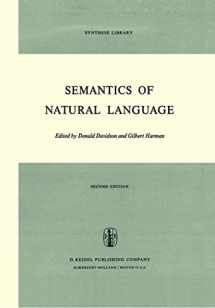
Semantics of Natural Language (Synthese Library, 40)
Book details
Summary
Description
The idea that prompted the conferenee for which many of these papers were written, and that inspired this book, is stated in the Editorial Introduction reprinted below from Volume 21 of Synthese. The present volume contains the artieles in Synthese 21, Numbers 3-4 and Synthese 22, Numbers 1-2. In addition, it ineludes new papers by Saul Kripke, James McCawley, John R. Ross, and Paul Ziff, and reprints 'Grammar and Philosophy' by P. F. Strawson. Strawson's artiele first appeared in the Proceedings of the Aristotelian Society, Volume 70, and is reprinted with the kind permission of the author and the Aristotelian Society. We also repeat our thanks to the Olivetti Companyand Edizione di Comunita of Milan for permission to inelude the paper by Dana Scott; it also appeared in Synthese 21. DONALO DAVIDSON GILBERT HARMAN EDITORIAL INTRODUCTION The success of linguistics in treating naturallanguages as formal syntactic systems has aroused the interest of a number of linguists in a paralleI or related development of semantics. For the most part quite independ ently, many philosophers and logicians have reeently been applying formai semantic methods to structures increasingly like naturallanguages. While differenees in training, method and vocabulary tend to veil the fact, philosophers and linguists are converging, it seerns, on a common set of interrelated probiems. Sinee philosophers and linguists are working on the same, or very similar, probiems, it would obviously be instructive to compare notes.


We would LOVE it if you could help us and other readers by reviewing the book
Book review



